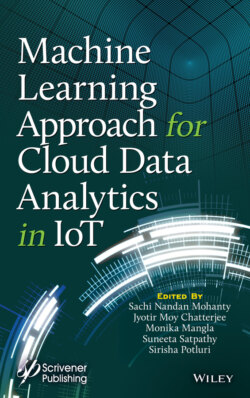Читать книгу Machine Learning Approach for Cloud Data Analytics in IoT - Группа авторов - Страница 71
2.5.2.2 Unsupervised Learning
ОглавлениеUnsupervised learning is one those finest learning techniques being a diversified part of machine learning methods in which the unlabeled input data infers the patterns desired [24]. There is no provision of providing training data, and hence, the machine is made to learn by its own. But at the same time, it is also taken care of that the machine must be able to do the data classification without any information about the data is being given beforehand.
The objective of unsupervised learning is to find out the structural prospective and patterns from the data which given as input. It does not require any kind of supervision for training the model. Rather, it makes out the patterns from the data on its own. The structure of this learning process can be referred from Figure 2.5. The basic ideology behind this is to expose the machines to a greater volume of different data and allow it to learn from the provided insights which happened to be unrecognizable previously to recognize the hidden patterns.
Like that, there are no necessarily defined outcomes as deduced from unsupervised learning algorithms. Instead, it reciprocates what is the indifference feature from the provided data set.
The machine requires to be programmed in such a way that it learns on its own. The machine needs to understand and get on with distinctive insights from both structured as well as unstructured data.
It may also so happen that the unsupervised learning model may provide less accurate results as in comparison to supervised learning technique.
It includes various algorithms such as Clustering, K-Nearest Neighbor (KNN), and Apriori algorithm.
Figure 2.5 Unsupervised learning.
